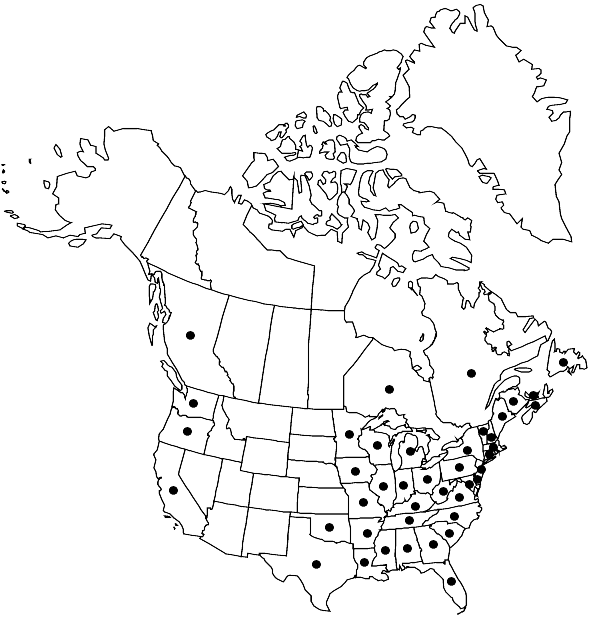Difference between revisions of "Sphagnum palustre"
Sp. Pl. 2: 1106. 1753,.
FNA>Volume Importer |
imported>Volume Importer |
||
| (3 intermediate revisions by 2 users not shown) | |||
| Line 10: | Line 10: | ||
|name=Sphagnum cymbifolium | |name=Sphagnum cymbifolium | ||
|authority=(Ehrhart) R. Hedwig | |authority=(Ehrhart) R. Hedwig | ||
| + | |rank=species | ||
}} | }} | ||
|hierarchy=Sphagnaceae;Sphagnum;Sphagnum sect. Sphagnum;Sphagnum palustre | |hierarchy=Sphagnaceae;Sphagnum;Sphagnum sect. Sphagnum;Sphagnum palustre | ||
| Line 34: | Line 35: | ||
-->{{#Taxon: | -->{{#Taxon: | ||
name=Sphagnum palustre | name=Sphagnum palustre | ||
| − | |||
|authority=Linnaeus | |authority=Linnaeus | ||
|rank=species | |rank=species | ||
| Line 49: | Line 49: | ||
|publication year= | |publication year= | ||
|special status= | |special status= | ||
| − | |source xml=https:// | + | |source xml=https://bitbucket.org/aafc-mbb/fna-data-curation/src/2e0870ddd59836b60bcf96646a41e87ea5a5943a/coarse_grained_fna_xml/V27/V27_15.xml |
|genus=Sphagnum | |genus=Sphagnum | ||
|section=Sphagnum sect. Sphagnum | |section=Sphagnum sect. Sphagnum | ||
Latest revision as of 21:24, 5 November 2020
Plants moderate-sized to robust, strong-stemmed, lax to somewhat compact, capitulum somewhat flattened to more typically compact and rounded; green to golden brown to pale brown with often a pinkish tinge; carpets to more or less compact, low to moderate sized hummocks. Stems brown, superficial cortical cells with spiral reinforcing fibrils visible, usually 2–4 pores per cell, comb-fibrils lacking on interior wall. Stem leaves to 1.7 × 1 mm, occasionally longer; rarely hemiisophyllous; hyaline cells non-ornamented, nonseptate. Branches long and tapering, leaves ± imbricate to spreading in shade forms. Branch fascicles with 2 spreading and 2 pendent branches. Branch stems with hyaline cells non-ornamented; no or weak funnel-like projections on the interior end walls, often with 1 large pore per cell on superficial cell walls. Branch leaves broadly ovate, 2.2 × 1.3 mm, hyaline cells non-ornamented, convex surface with elliptic pores along the commissures, chlorophyllous cells isosceles-triangular to ovate-triangular in transverse section and just enclosed to just exposed on the convex surface; end wall not thickened. Sexual condition dioicous. Capsule with numerous pseudostomata. Spores 24–33 µm, surface finely papillose to smooth, distal surface with distinct bifurcated Y-mark sculpture; proximal laesura more than 0.6 spore radius.
Phenology: Capsules mature mid to late summer.
Habitat: Widespread in forested fens and poor to rich sedge fens
Elevation: low to moderate elevations
Distribution

B.C., N.B., Nfld. and Labr. (Nfld.), N.S., Ont., P.E.I., Que., Ala., Ark., Calif., Conn., Del., Fla., Ga., Ill., Ind., Iowa, Ky., La., Maine, Md., Mass., Mich., Minn., Miss., Mo., N.H., N.J., N.Y., N.C., Ohio, Okla., Oreg., Pa., S.C., Tenn., Tex., Vt., Va., Wash., W.Va., Wis., Europe, Pacific Islands.
Discussion
Sphagnum palustre may occur elsewhere than listed above, but the taxonomy is unclear. In some open-grown situations, it may have a reddish tinge and seem similar to S. magellanicum, but this is a pinkish red color rather than the purplish red of the latter. See discussions under 5. S. henryense and 9. S. papillosum for distinction from those species.
Selected References
None.